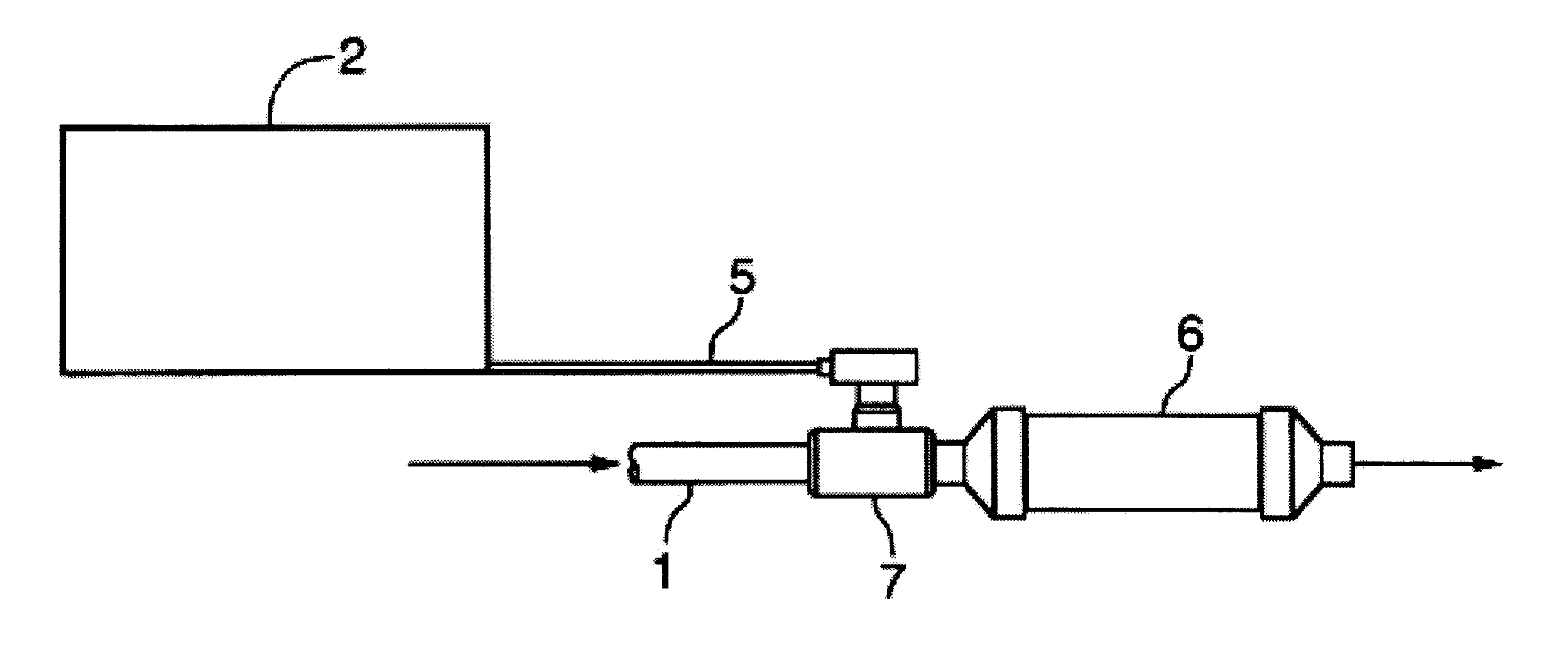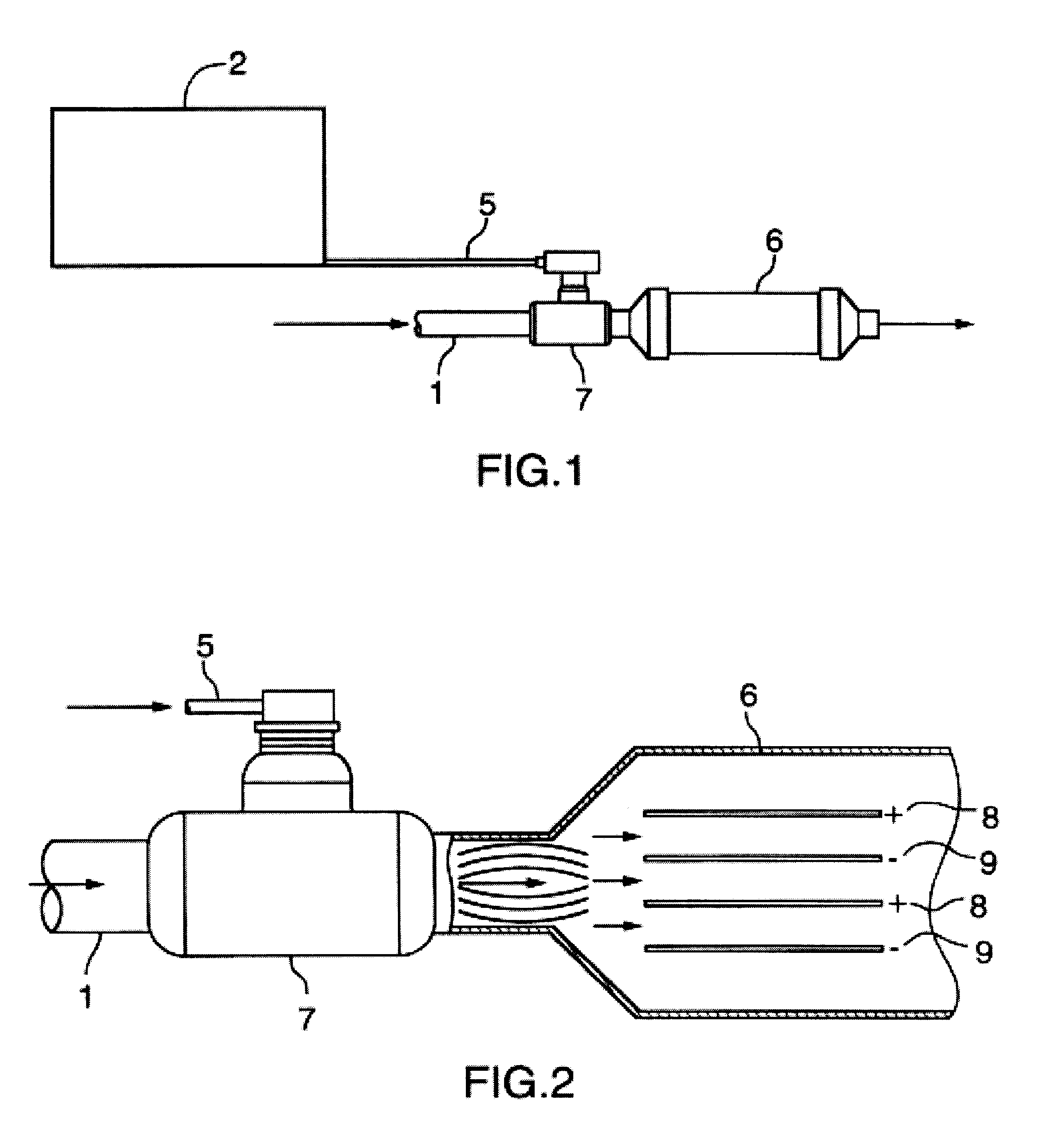Catalytic simulation using radio frequency waves
a radio frequency wave and catalytic simulation technology, applied in the direction of hydrocarbon preparation, nuclear magnetic resonance analysis, filtration separation, etc., can solve the problems of high cost and possible heavy metal contamination, high initial cost of precious metals, and minimal amount of catalysts used
- Summary
- Abstract
- Description
- Claims
- Application Information
AI Technical Summary
Benefits of technology
Problems solved by technology
Method used
Image
Examples
Embodiment Construction
An experiment was conducted utilising the method of the invention as follows. Water is pumped through the piping 1 and electrolytic cell 6. Direct current power supply is connected to the cathodes and anodes 9 and 8 and sends a stream of electrons through the water between the anode 8 and cathode 9 of the electrolytic cell 6. The frequency generator 2 supplies a selected frequency signal through the submerged antenna 3 upstream of the cell 6. The dissolved oxygen content of the exit stream from the cell is measured via a submerged probe connected to a dissolved oxygen meter. No platinum catalyst is present in the electrolytic cell 6. In contrast, a conventional electrolytic cell would include catalysts plated on the cathode. With the frequency generator off, the flow of input water is measured for dissolved oxygen content, typical results are in the order of 7 milligrams per litre (mg / l). Power is applied to the electrolytic cell 6 by DC power supply and the exit stream of water is ...
PUM
| Property | Measurement | Unit |
|---|---|---|
| Frequency | aaaaa | aaaaa |
| Temperature | aaaaa | aaaaa |
| Concentration | aaaaa | aaaaa |
Abstract
Description
Claims
Application Information
 Login to View More
Login to View More - R&D
- Intellectual Property
- Life Sciences
- Materials
- Tech Scout
- Unparalleled Data Quality
- Higher Quality Content
- 60% Fewer Hallucinations
Browse by: Latest US Patents, China's latest patents, Technical Efficacy Thesaurus, Application Domain, Technology Topic, Popular Technical Reports.
© 2025 PatSnap. All rights reserved.Legal|Privacy policy|Modern Slavery Act Transparency Statement|Sitemap|About US| Contact US: help@patsnap.com



